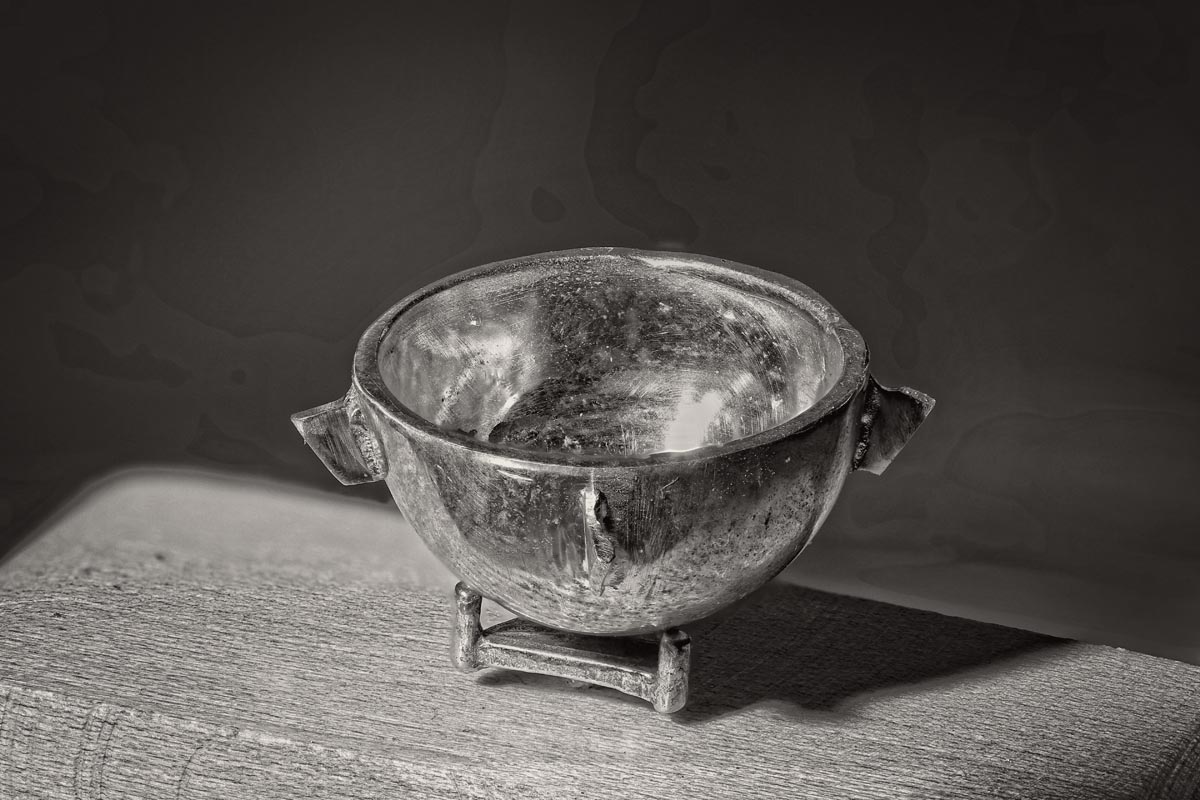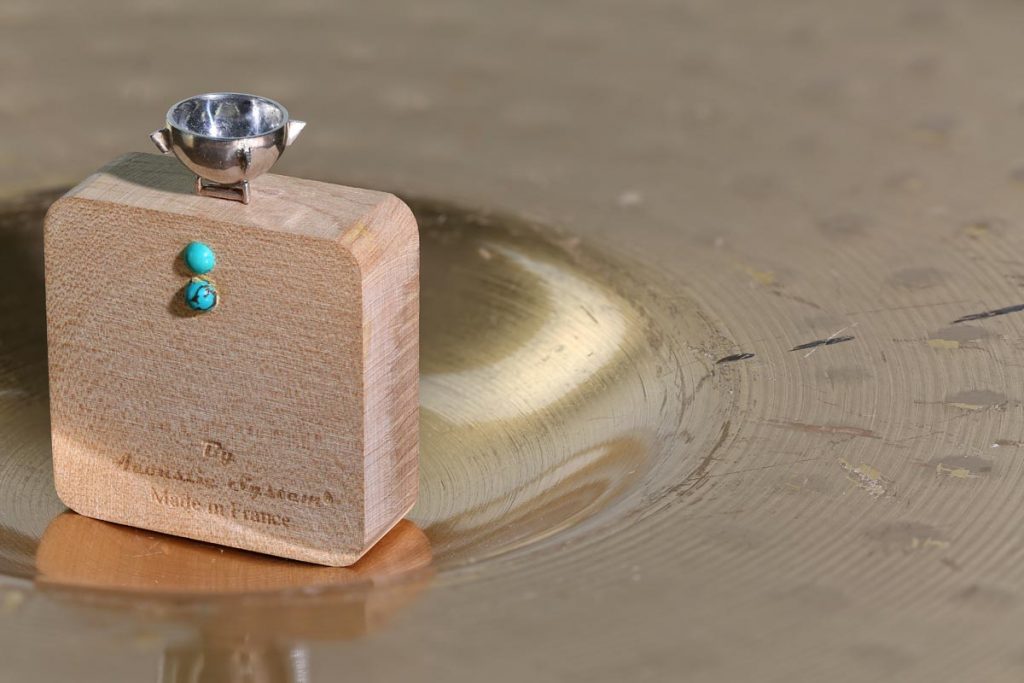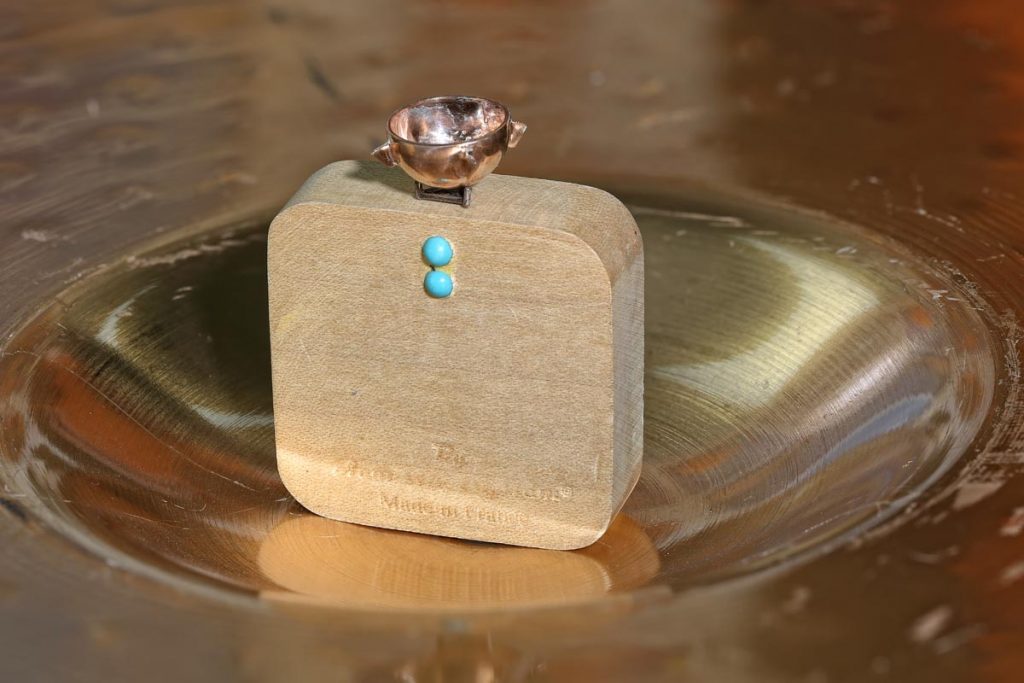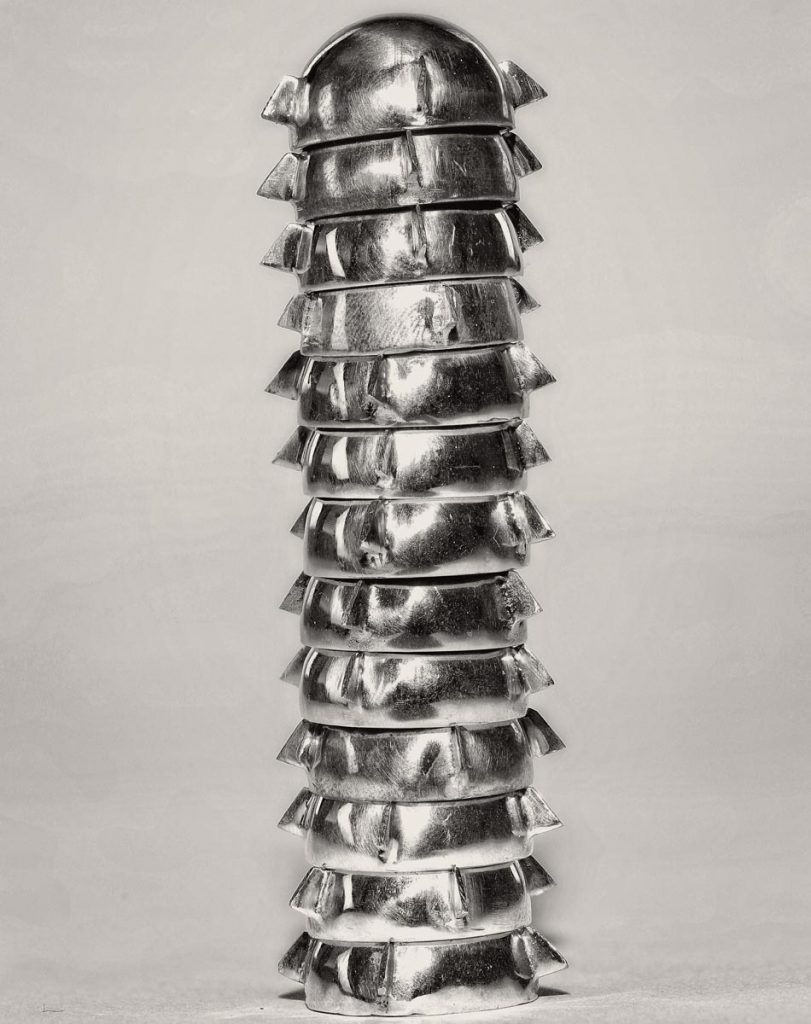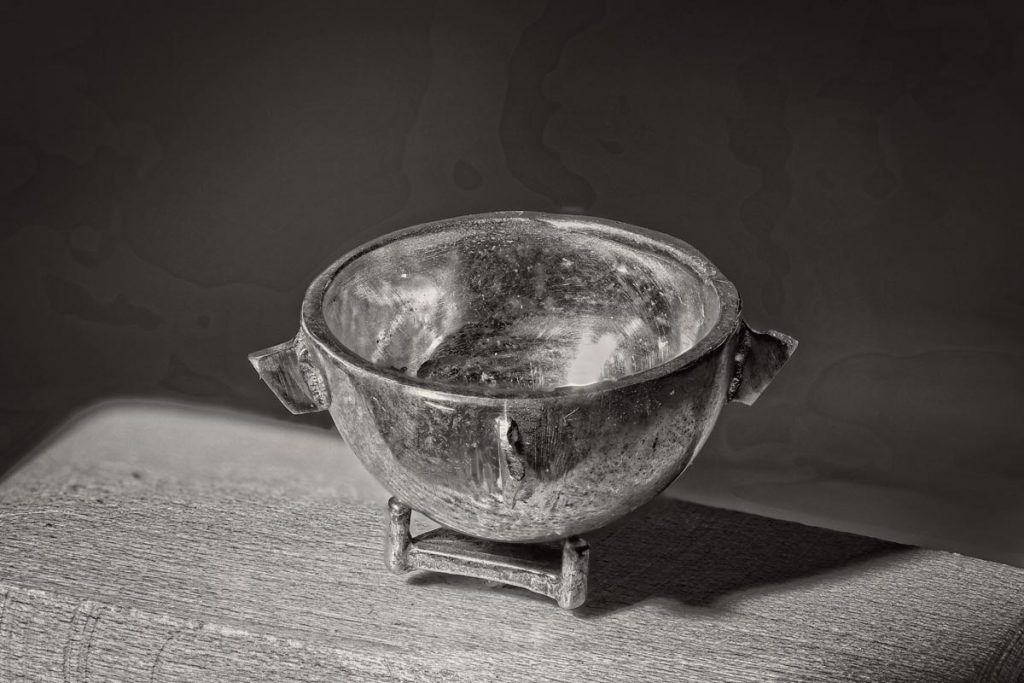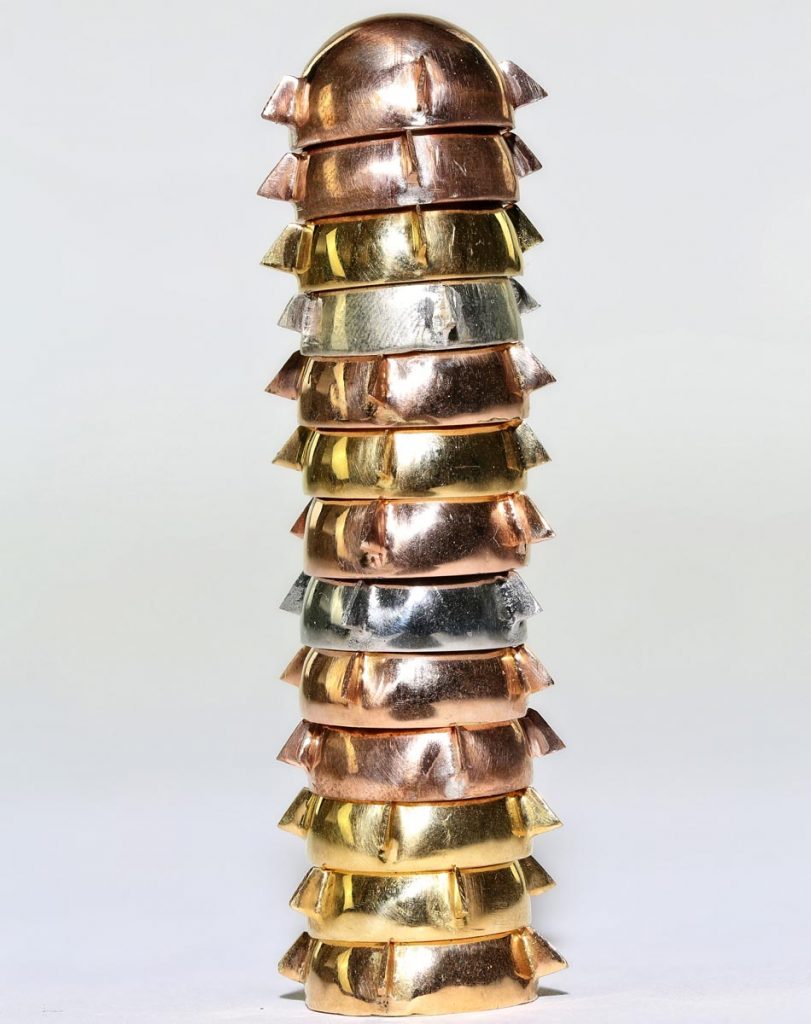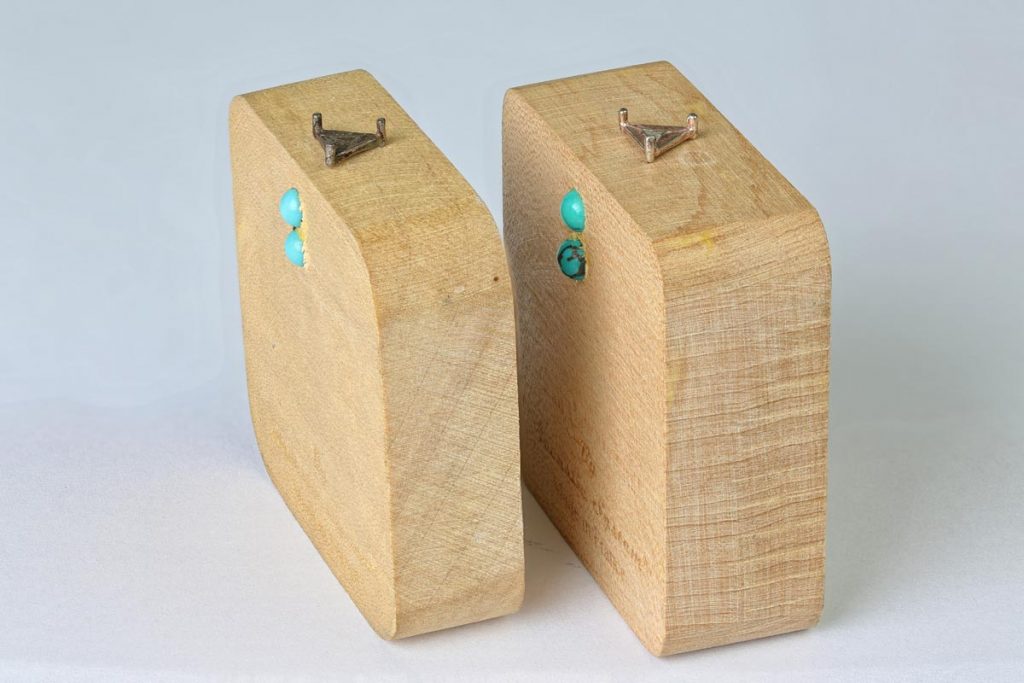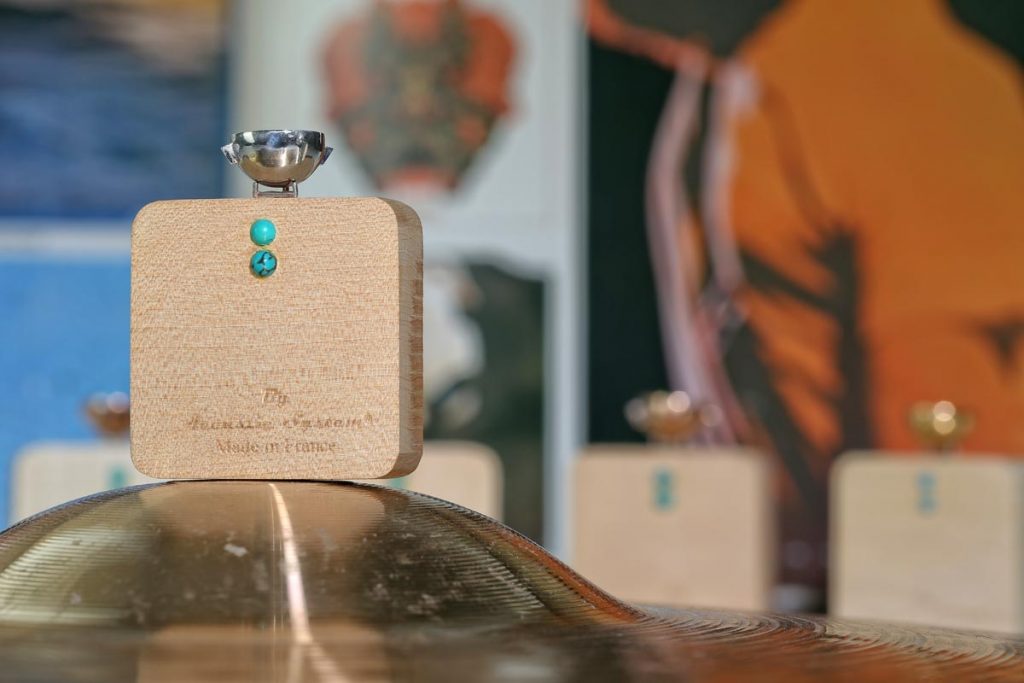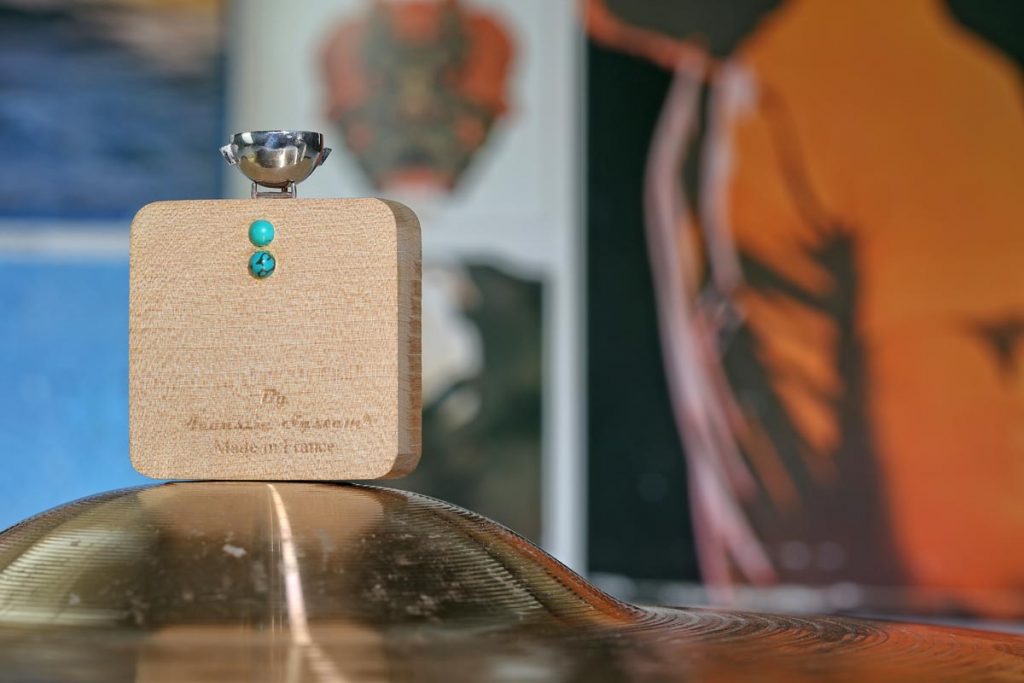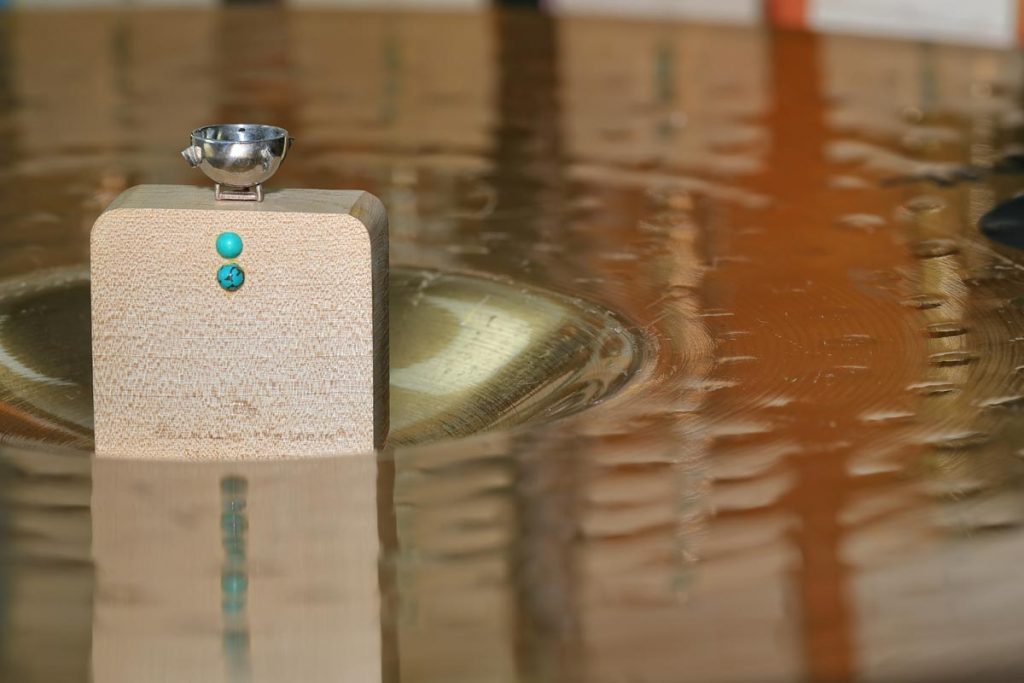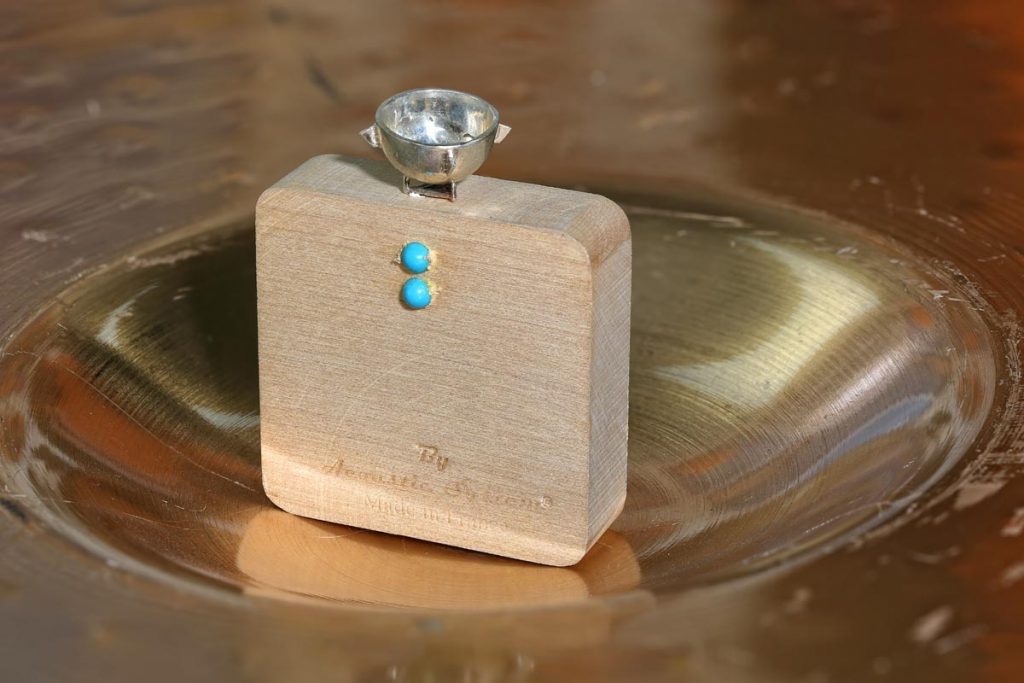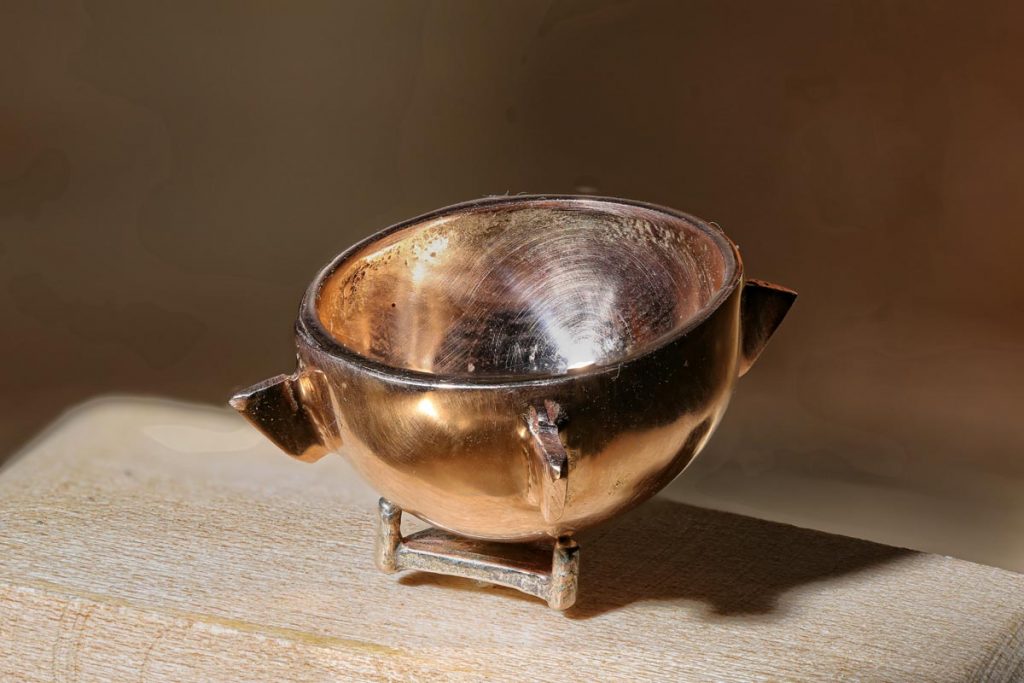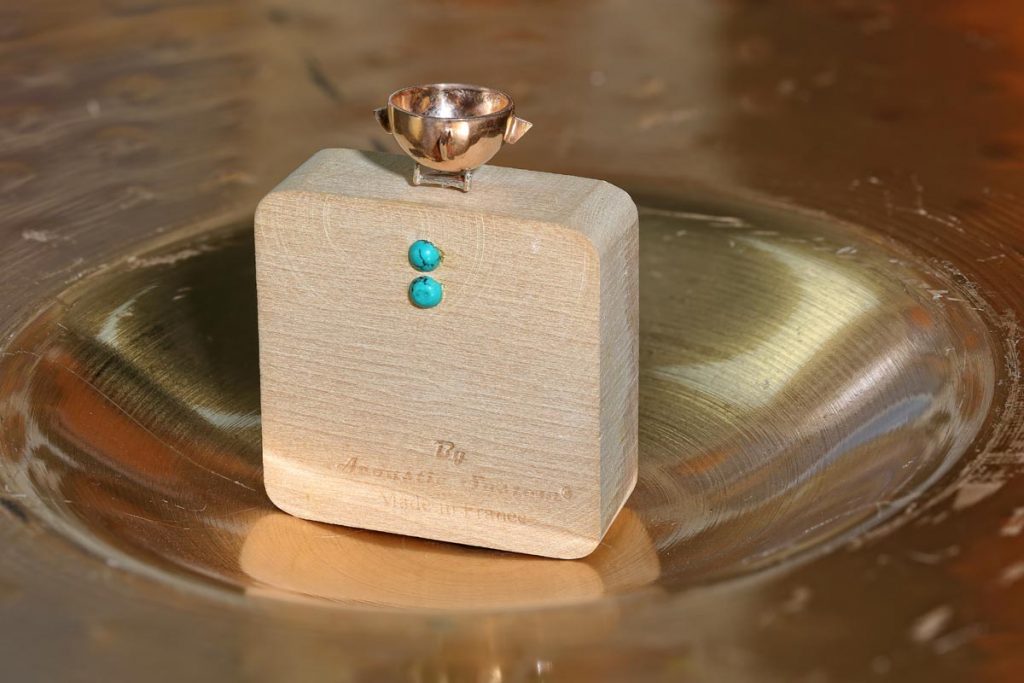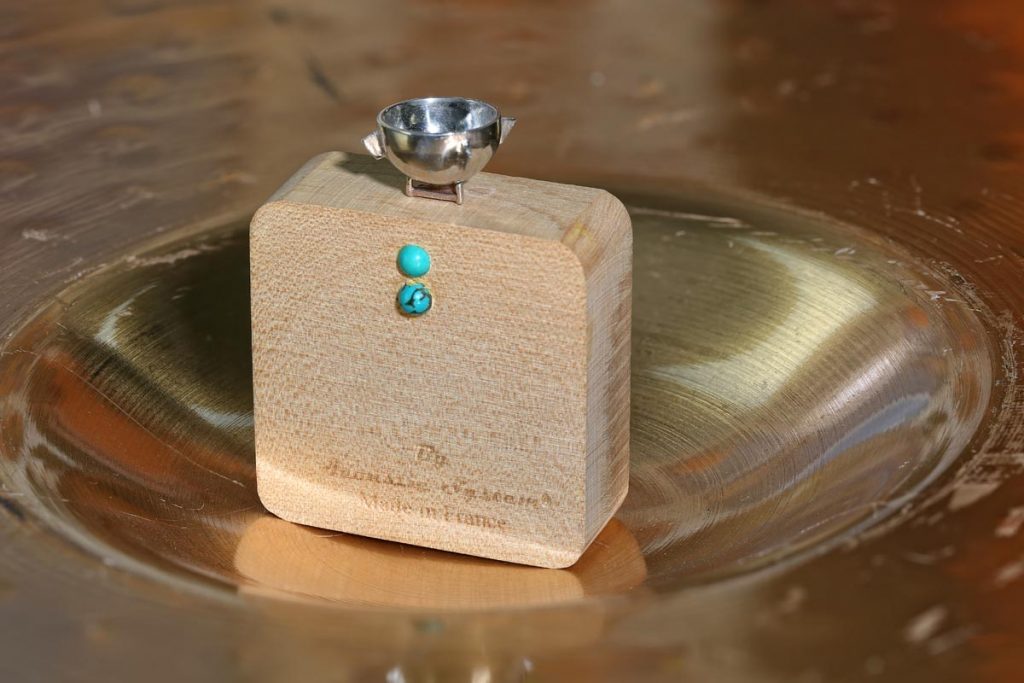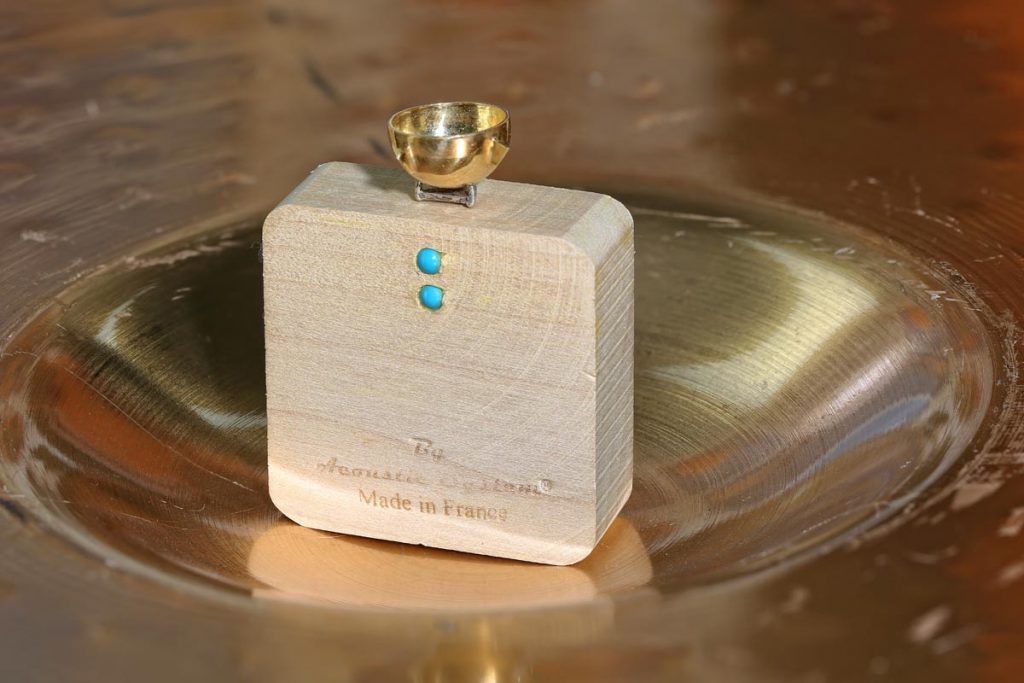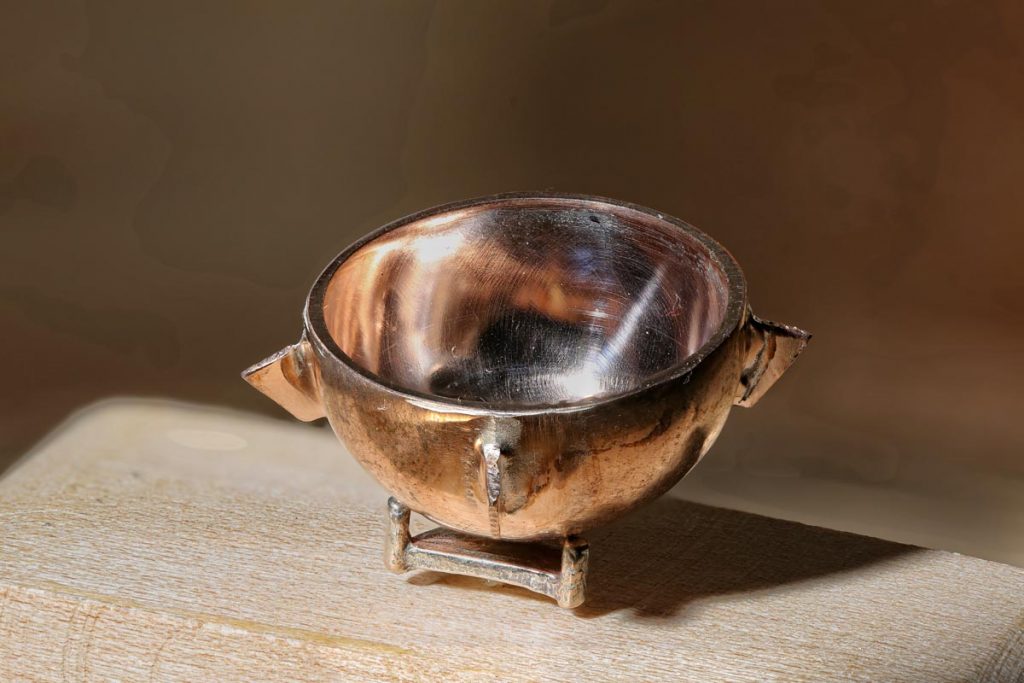Hells Bells or Heavenly Chimes?
(Re-)sounding metal bowls from Acoustic Sysytem International, the size of dollhouse cups have a spine-chilling acoustic impact surely not of this world: Will this get us into a hell of a mess?
The Lord of Darkness wasn’t involved in designing the resonators – at least that’s what Franck Tchang says. He claims he’s solely responsible for the invention (or, to be more precise, for the experimental deduction) of Acoustic System International’s sound bowls. Of course some folks will think both are one and the same individual, but that’s speculation better left to the orthodox faction. I’d have to start from the very beginning. But then again, I’m already in the thick of things.
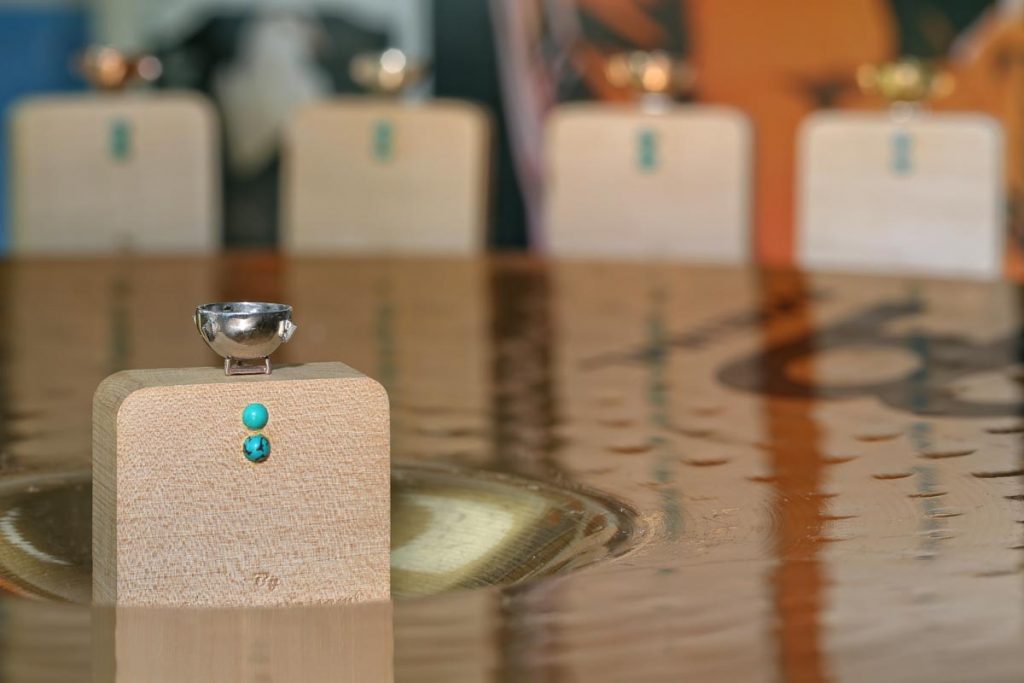
The corners of my mouth involuntarily move upward as I listen to Daft Punk’s “One More Time.” The pumping bass fires like dumdum bullets from somewhere out of the almost unimaginable depths lying between the speakers, and water bombs seem to burst at chest level two steps before they even reach me. But I’m still not completely satisfied, despite the 15 resonators mounted on their little maple blocks in my listening room. There’s something in the upper frequency range that tingles in my ears. I’ve noticed the same über-motivation during the applause on Fanny van Dannen’s Grooveman. It sounded different (better) in our editorial listening room when Thomas Fast, Acoustic Systems International’s German distributor for as long as anyone can remember, performed his well-studied and prepared-for-all-possibilities magical ritual. I wasn’t the only person to think so, by the way. Cai Brockmann also witnessed the “magical mystery treatment” in amazement.
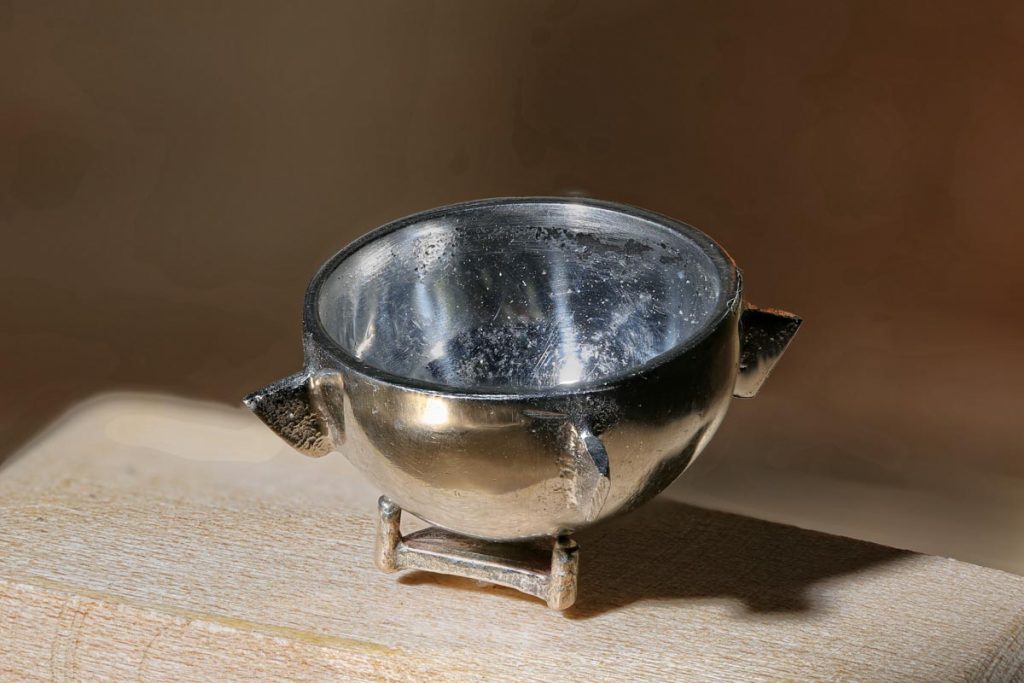
Anyway, back to my listening room. I distributed the resonators according to the instructions supplied with them, but I had mixed up the silver and platinum versions. This can happen quite easily, I have found, but maybe I have a slight visual impairment: Sometimes I need a second to distinguish the (copper) basic resonator from its gold cousin. Along with the basic copper and yellow gold versions, three other variations are available: silver, special (red gold) and platinum. The resonators I was trying out came from Thomas Fast, who had given me a white briefcase filled with them. Considering their enormous value, I would’ve preferred to have the briefcase chained to my arm …
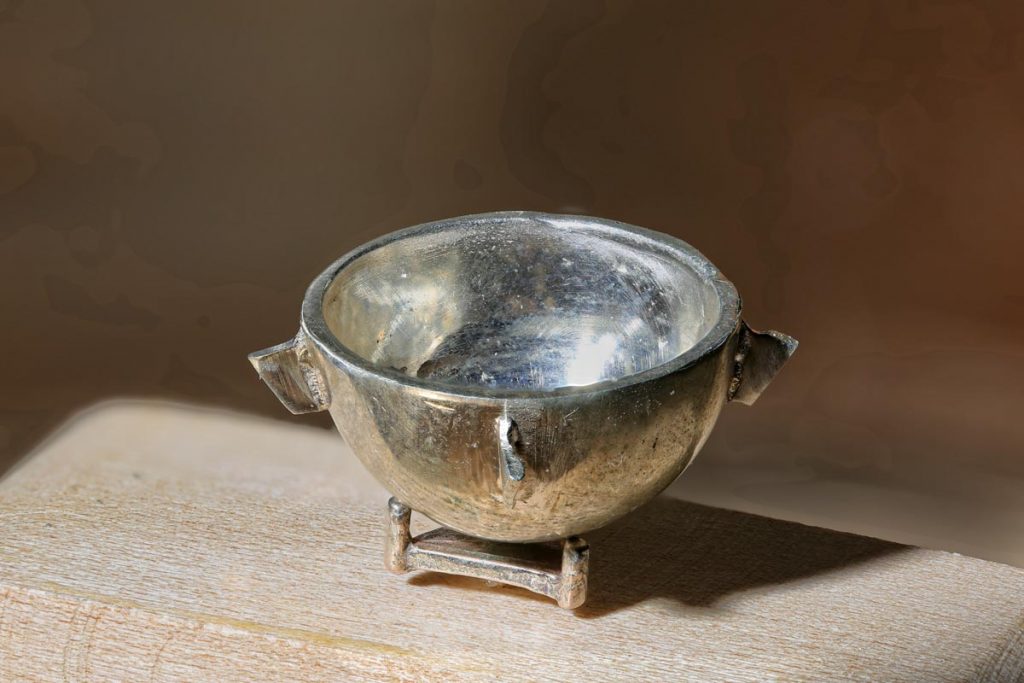
To confirm I was using the correct resonator in its dedicated position, I weighed, tagged and arranged them all. The “Made in France” slogan stamped on the wood blocks explains the production tolerance of 10 percent. Let’s just say that the secret of the Acoustic System International resonators, if there is one, doesn’t probably lie in a perfect build quality. Maybe then it’s the manual labor: Each resonator is manually polished and “pitched” by ear. The maple blocks are available in a thicker version for the noble metals and in a slightly thinner, softer one for the basic resonators. Both of them must be attached to the wall using a bit of Blu Tack or something similar in such a way that the blocks don’t touch the wall. They should be able to resonate freely so they can transmit the resonances to the small trident on which the little bowls rest. If I understand Franck Tchang correctly, the resonators interact with and reconfigure air molecules. Long waves become short ones and overpressure transforms into “radiance.” As passive resonators, they need excitation from outside to have an effect. Here they function as secondary sound sources, primarily adding harmonics to the sound. I imagine, however, they even have an effect on the audible range: for example, the decay of strings and voices seems to obtain an “extra kick” just before fade-out. Now this might almost appear to be an argument in favor of the competition; but applied with the right amount, the effect is incredibly natural and harmonious. I’m facing the paradox to clearly perceive the artifact but still find it inherently more correct.
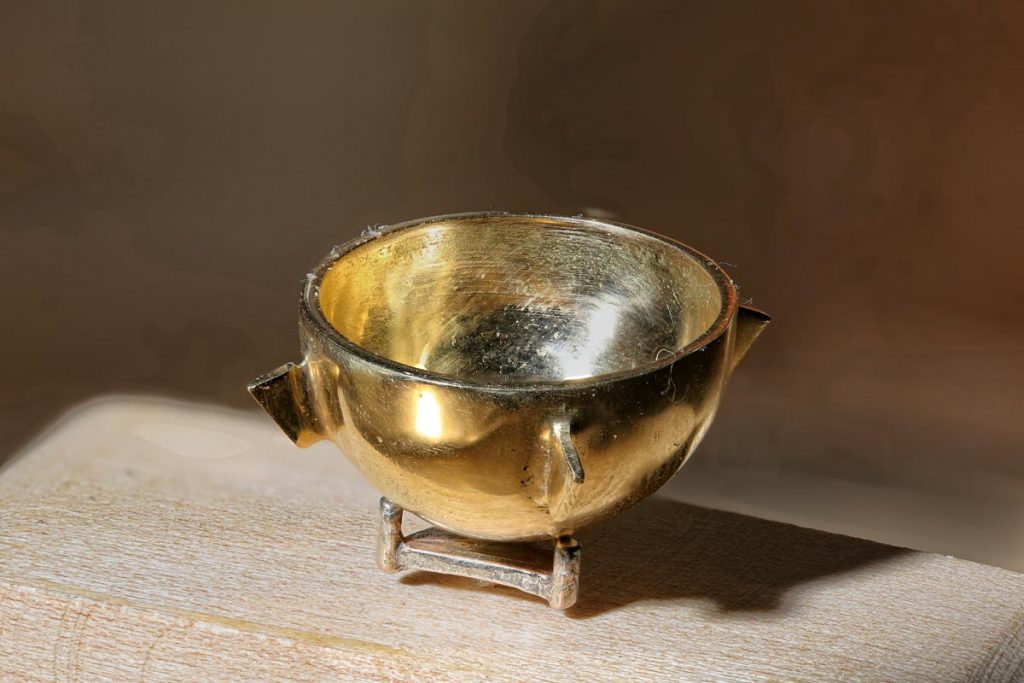
But now listen carefully: When thinking of a room as a loudspeaker that must be optimized, I don’t think of something being added to the sound. Rather, I consider correcting room modes I’ve come to accept because I’ve gotten used to them. This would also explain why I intuitively found it more authentic. However, the resonators still seem to have the greatest influence in the inaudible overtone range as tonality is unperturbed. They don’t really add anything; rather, they complement – according to Tchang’s theory – overtones that were lost during the recording process. Okay, you have every right to be skeptical at this point. I, too, don’t really understand how a golden thimble could possibly know the exact overtone range of various instruments, let alone reproduce them … Once again, though, the convincing argument proves to be practical implementation: To my mind, it just works. Maybe precision again isn’t the point – maybe the sheer presence of harmonics that were not there before makes the difference and creates the feeling of authenticity. After all, hi-fi is not really about the exact reproduction of the original (impossible), but about creating a credible illusion of the original. Those who disagree are welcome to contact me personally.
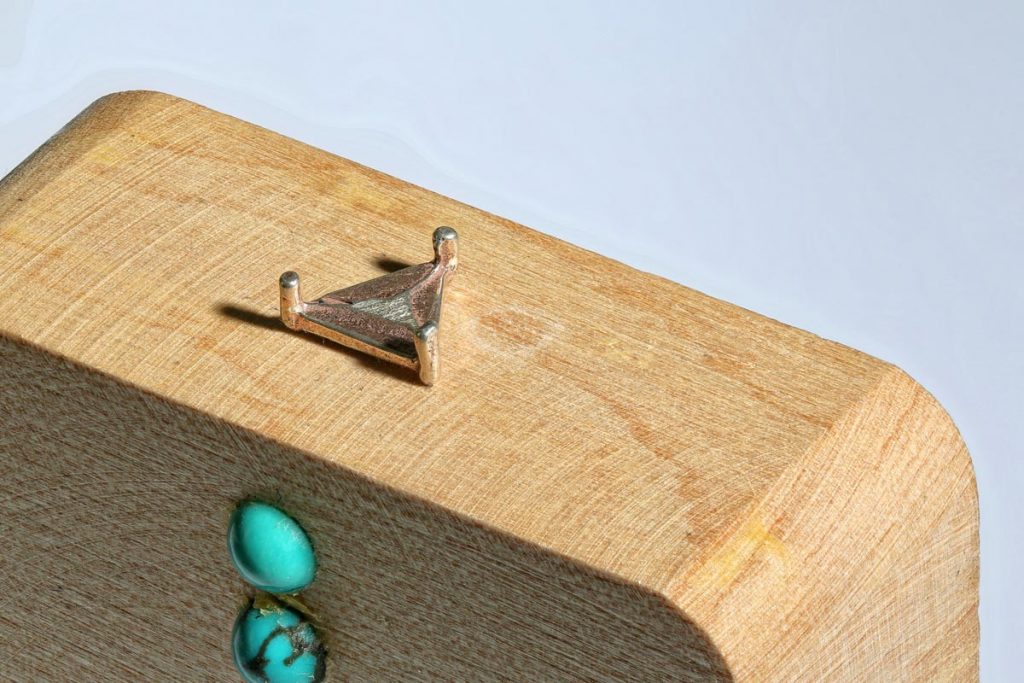
As mentioned at the beginning, placing the resonators is extremely important. A silver resonator under the ceiling behind and between the loudspeakers produced too much energy in my listening situation, shifting size relations in an irritating manner. The same resonator behind me and a platinum resonator in the front resulted in a lively presence and a perfect soundstage. With the resonator in its initial position, Ella Fitzgerald’s voice seemed to grow to enormous dimensions with increasing pitch. After relocating the resonator, only the volume of her voice changed, not her position.
The distribution and number of the resonators start on a vertical axis on the wall behind the speakers. Just above the floor, copper is recommended to provide a drier and more focused bass range. Systems that tend to be lean are better served with gold resonators in this location, though. In the middle, just about at the height of the tweeters, gold or silver is best. Bright-sounding systems need gold, I daresay. Silver resonators can be quite an ambiguous tool: In my setting, silver in the middle position caused too much presence, almost as if the Steinmusic SP1.1 suddenly started to have a lisp.
All of the resonators are powerful tools, but the silver ones, in particular, can overdo things. As I can’t complain about a lack of presence and temper in my system, one silver resonator in the back, a basic copper model just above the floor behind and between the speakers, red gold in the middle and platinum under the ceiling did the trick just fine for me. The platinum version is, without a doubt, the most universal model, and it also has the biggest effect: One platinum resonator alone creates a live atmosphere and gives you the magnificent feeling of being immediately involved. Starting from this harmonic base, I went on to complete the fine-tuning. Instead of listening to many different tracks and changing configurations, I limited myself to the B-side of Nina Simone’s live album “At the Village Gate.” It’s a raw and very early recording with lots of mistakes such as falling microphones, loudness deviations and the overly present atmosphere of the club. Maybe that’s what makes it so moody and compelling. I often use the track “Brown’s Baby” to fine-tune sound. As soon as the voice and piano form a harmonic unit – when they sound round and full without getting in each other’s way – and as soon as the voices from the audience and the chinking of glasses don’t seem superimposed but more an inherent part of the sound, I have a result that is suitable for all other kinds of music. After this step, two of the gold models that had previously found a place to the side of my listening chair due to my initial unfiltered intoxication with tonal colors had to leave the room. In the end, I achieved a perfectly balanced and fantastically pronounced reproduction with a setup using seven instead of nine resonators. Even before listening to music, I was able to notice the exceptional reproduction reflected in increased speech intelligibility.

You can believe me when I say I had been quite satisfied with my system’s performance before using the resonators, but after the tuning with them, it gained it whole new dimension – as if yin and yang had lived apart in two separate speakers until now finally being reunited, hand in hand in the center of the soundstage and able to fill the room far beyond its boundaries. The alchemist Franck Tchang has given us a powerful and seductive tool. Use it wisely, and your system will make a huge leap forward that you will never be able to achieve with new components. The Acoustic System International resonators let the listening room disappear in an almost magical way, placing the listener in the middle of the recording ambiance. Even if it sounds absurd considering the asking price, these five resonators should form the basis for any system. They should be attached to the walls before you even determine the power phase and switch on your amplifier. It’s about time to finally expand the term hi-fi by the dimension of the playback conditions.

